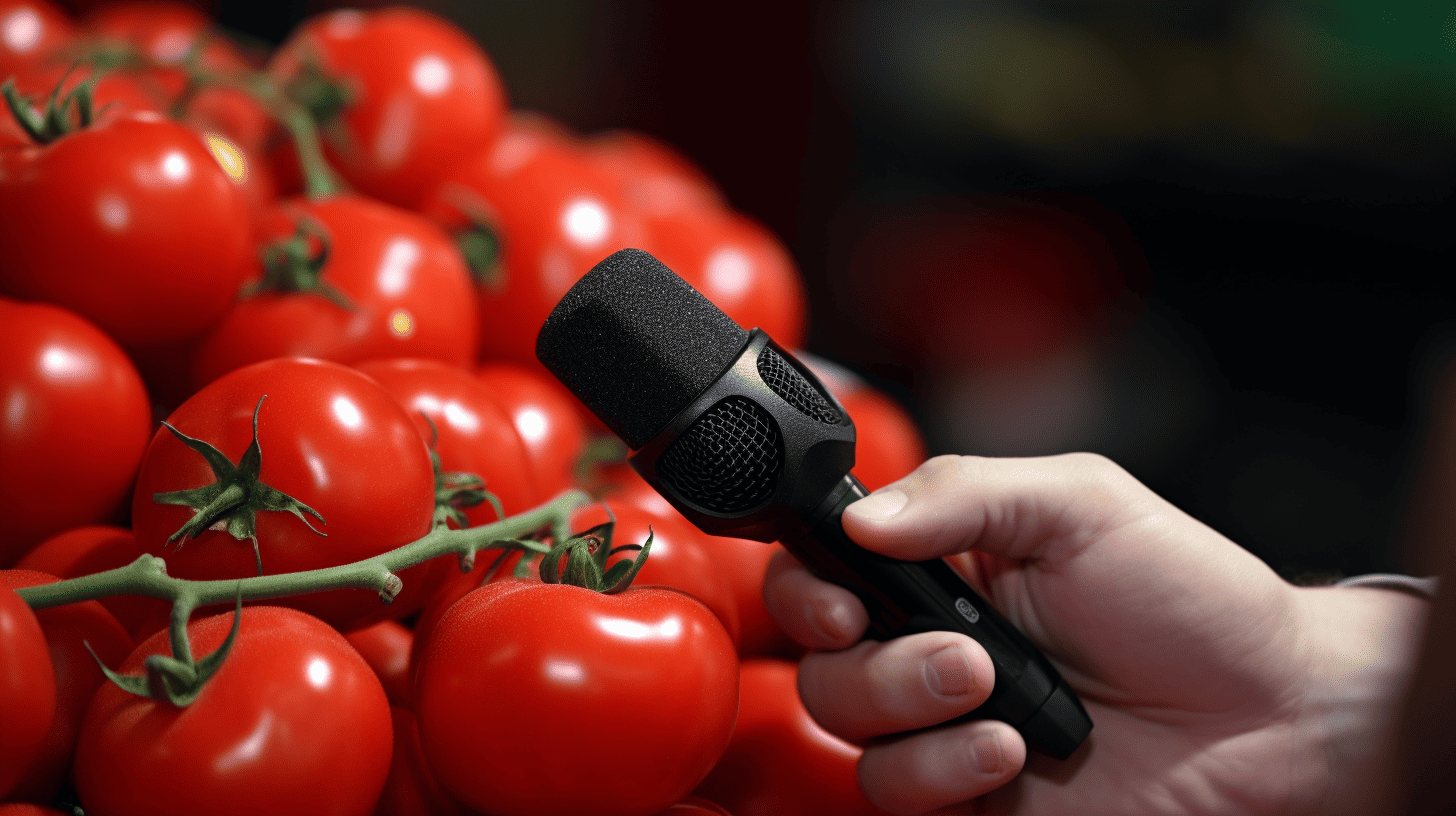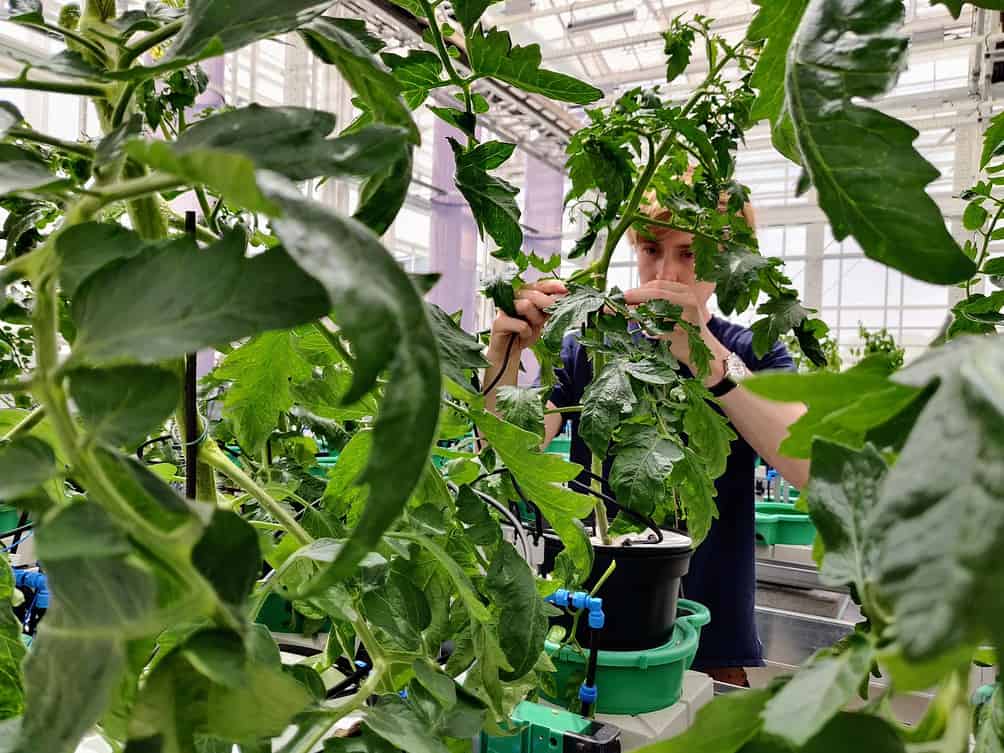
What we are really missing at the moment is the grower’s ‘green’ knowledge. How do you put all the knowledge from the grower’s head into a model?
If you ask growers why they make certain decisions, they cannot always put it into words. They see how the plant looks, the head is “purple” or “gritty”,m and the leaves are getting a little long or the crop is too vegetative. They feel that the temperature or relative humidity is too high or too low. If you have two growers look at the same crop, they won’t always describe it the same way either. So there is no standard that explains precisely what is “too vegetative”. Smell, see, feel, and especially a lot of experience are the tools the grower uses. How are we going to capture that in soft- or hardware?
We have controlled the climate and watered our greenhouses with a climate computer for about 50 years. The computer can open the valve and turn on the pump to start watering just fine. The question is what is the right moment to water, and what exactly should the temperature and humidity be based on the current plant load (much or little fruit on the plant), the (expected) amount of radiation, the energy price, and the expected market demand in the next week? These are all considerations the grower makes based on his knowledge and experience.
To become less dependent on the grower’s scarce knowledge, it is essential to get direct feedback from the plant on how it feels. How convenient it would be if the plant indicated, ‘I need more water’ or ‘there is a lot of light now; if you give me some more CO2 and a slightly higher temperature, I can grow faster’.
Tools to help the grower
Fortunately, we are getting closer and closer to tools that can assist the grower in this regard. The system PhytelSigns which I described before, can use electrical signals in the plant to indicate how the plant is doing. The electronic nose that TU Delft and NXP, among others, are working on could also contribute to this.
Another exciting application is measuring the acoustic signals produced by the plant.
This technology was developed in the research program Plantenna, in which researchers Satadal Dutta and Gerard Verbiest of TU Delft investigated the possible applications of ultrasound.
They investigated how measurements could be made of the plant’s wood vessels. These wood vessels transport water and nutrients through the plant. It was discovered that the plant makes a kind of crackling sound. When there is not enough moisture, the plant lengthens a little bit, and gas bubbles form in the wood vessels. The drier the plant is, the more bubbles form. By the way, the sound cannot be heard by humans because it is around 20 kilohertz. This frequency is about the same as that with which bats use echolocation to determine their position toward insects.
From technology to product
But what do you do with this knowledge? Knowing that a plant that is too dry can send out sound signals is nice, but how do you interpret these signals? What exactly is the plant “saying” and what should you do to prevent problems? As with the research by PhytalSigns, the trick is to develop a dictionary or rather a recipe book. With that, you can execute the desired recipe based on the observed signal and the grower’s strategy. For example, one grower wants their crop to receive a slightly smaller amount of water with a bit more nutrients because his variety will be just a bit sweeter. Another wants as many kilos as possible. For the same measurement, a different recipe can then be chosen, and executed by the climate computer.
However, from scientific research to a working product with a good business model is still a long way to go! First, the question of what could you apply it for and who would be willing to pay for it?
This is where 2022 TU Delft master’s students Berend de Klerk and Thijs Bieling connected. In addition to further developing the sensor, they set to work on market research. To do this, they spoke with many potential customers and, based on this, set to work on a business plan.
In February 2023, they founded Plense Technologies. As they themselves point out, they are still in a very early phase of their development. With the help of NWO funding, they will work on further developing the sensor and interpreting the data collected. The prototype of the sensor is so tiny that it can hang from the stem of a plant. What is essential for subsequent versions is that it eventually becomes a robust sensor. After all, the climatic conditions in a greenhouse are not ideal for sensitive electronics. It is sometimes very hot and humid there.

Customers
At least as important as continuing to develop the technology is that, in addition, they continue to work on discovering their first customer segment.
Currently, there are clear relationships with the amount of water in the plant, which is closely related to the different balances of the plant. Many possible ideas for applications are already there, and they are currently validating them both technologically and with customers.
Although Plense has only been around for a short time and much still needs to be researched and developed, it is an essential development for greenhouse farming. After all, direct feedback from the plant is an indispensable link in the further development of hands-free cultivation.
The story of the development of the acoustic sensor is also a very good example of how a technical university like TU Delft plays an important role in developing technology for high-tech horticulture. Over the past five years, the TU Delft AgTech Institute, among others, has worked hard to gain knowledge and bring horticulture into focus as an important sector. As a result, more and more professors and students are interested in the sector.

